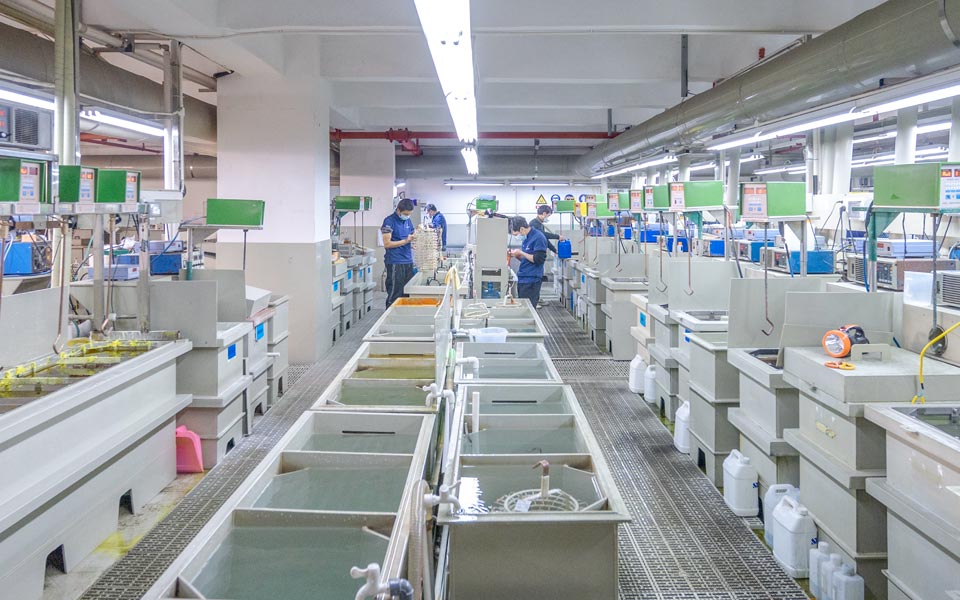Shoppers demand the best when shopping for jewelry. They want captivating and durable pieces that would take everyone’s breath away. To achieve this, the best technique to use is Rhodium Plating. It results in shiny jewelry with no dents or scratches.

But what does rhodium plating mean? Let’s unlock its ins and outs!
What is Rhodium Plating and How Does it Work?
Rhodium plating is also referred to as rhodium dip or rhodium flashing. It is a process where rhodium (the rarest and most valuable precious metal in the world) is thinly applied on jewelry to make it extremely elegant, tarnish-free, with a shiny-white finish.

The first step on how it works is to clean the jewelry thoroughly, removing stains, dirt, dust, or any other impurity. Simply washing the jewelry in clean water won’t be enough, as the slightest stain can cause the rhodium plating not to stick. Some jewelers carry out electro-cleaning, which effectively removes every iota of impurity.
After the jewelry is properly cleaned, it’s dipped in an activator solution with electric current, which will prepare it for the rhodium plating.
The next and final step is to submerge the piece of jewelry into a rhodium solution for about 30 seconds.
What are the Benefits of Rhodium Plating for Jewelry?
Rhodium plating is a widely adopted method for making jewelries stand out, extremely brilliant, and attractive. Below are the various benefits involved:
- Longevity: It offers resistance against scratches and dents, improving the jewelry’s durability.
- Hypoallergenic: It is safe for everyone, including people with sensitive skin, doesn’t cause or aggravate skin allergies.
- Visual appeal: It makes the jewelry shine brighter and prevents the appearance of blemishes.
Can All Types of Jewelry be Rhodium Plated?
No, rhodium plating is best suitable for white-gold jewelries. However, it can be considered for other materials like silver and precious metals. These materials provide a solid base for the rhodium coating to stick for maximal results. Rhodium plating is not great for base metal jewelry made of materials like copper or brass.
How Long Does Rhodium Plating Last on Jewelry?
The longevity of rhodium plating on jewelry is determined by friction. So, for pieces that are worn everyday like wedding rings, the plating will fade off faster. It could be due to friction from hand-washing, dish-washing, gripping things, etc. But for jewelries that are worn only on special occasions, the rhodium plating will last longer.
Is Rhodium Plating Safe for Jewelry and for Wearers?
Rhodium plating is nickel-free and non-toxic, which makes it hypoallergenic. This means that it is safe for jewelry and its wearers, including people who react to silver or nickel. The thin layer of rhodium applied protects wearers from having direct contact with the unsafe properties of the jewelry. In fact, it’s the perfect recommendation for sensitive skin, babies, and open or new piercings.

Is Rhodium Plating Expensive?
Rhodium is a rare precious metal, which makes the plating process quite expensive. An ounce of this metal costs about $2,500 to $3,000, however, the price tends to fluctuate across the world due to changing market conditions. And the quantity of rhodium used will depend on how large your jewelry is and the thickness specification.
How to Care for Rhodium-Plated Jewelry?
As stated above, the major factor that determines the longevity of rhodium-plated jewelry is friction. So when cleaning the jewelry, avoid rubbing it. Other elements that can distort the luster of the rhodium-plated pieces are sweat, skincare products, chlorine, and cleaning solutions.
- Simply use a little water for cleaning and let it dry by air. Don’t use much water!
- Before going to the gym, exercising, or doing labor that will cause sweat, take off the jewelry.
- Avoid wearing and removing the jewelry constantly; this causes friction. Playing with the jewelry, twisting it, or fidgeting with it, depletes the rhodium plating.
Can Rhodium Plating be Removed from Jewelry?
Yes, rhodium plating can be removed from jewelry. This is done through a process called rhodium stripping or electro-stripping. It involves the use of specialized chemicals and instruments to dissolve the rhodium coating, which restores the jewelry to its original state.
Are There Any Alternatives to Rhodium Plating for Jewelry
The most popular alternatives that can compete with the efficiency of rhodium plating are sterling silver and platinum plating.
Compared to rhodium plating, sterling plating is less expensive, more durable, but tarnishes faster. When it tarnishes, the shine depletes, and when it loses its durability, it will cause more scratches and gain imperfections quickly.
While rhodium plating and platinum plating are part of the same family, platinum plating can be applied on jewelry with a thicker coating, whereas rhodium plating is always applied thinly because it is rare. Because of this, rhodium plating needs to be carried out more often because they deplete quicker. But since platinum plating is done to be thick; they last longer.
Key Takeaway
Rhodium plating is a great and reliable medium to improve jewelry aesthetic appeal, making it shine brilliantly and protected from blemishes, dents, scratches, and other forms of discoloration. Contact us for more information on how to make your jewelry to be more appealing to customers and stand out.
